Crete, the largest of the Greek islands, has been inhabited since the most ancient of times. These footprints date from 6 million years ago.
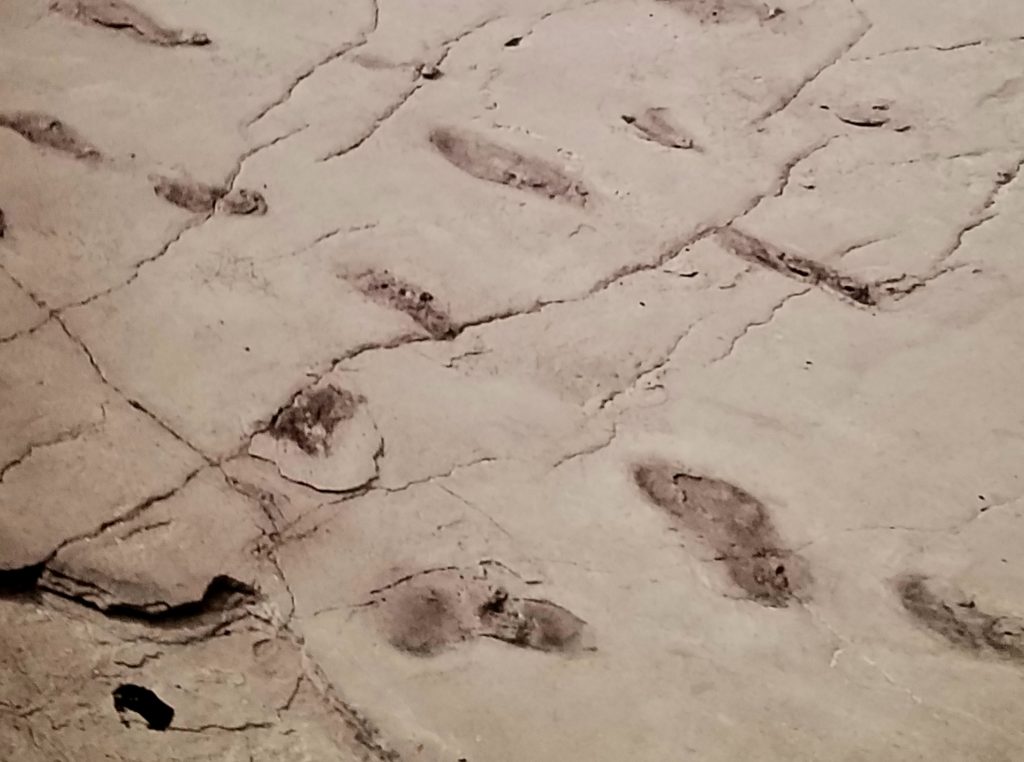
Crete is very hot in the summer, and full of tourists. We are here in January and the tourists are scarce, but many many shops are closed, and many restaurants. The inter-island ferries are not running, and special tours like hiking and food and wine are not running. But we are happy to find that some restaurants and museums are open, and happy to be out of crowds. Plus, the temperature is fine, in the mid 60s.
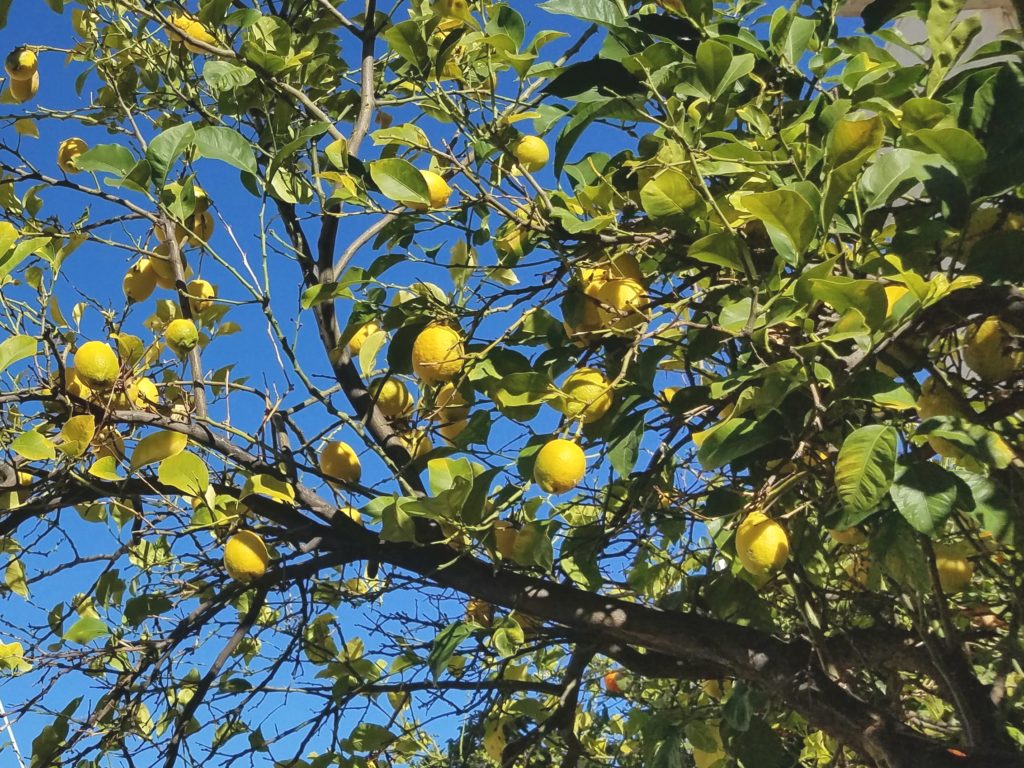
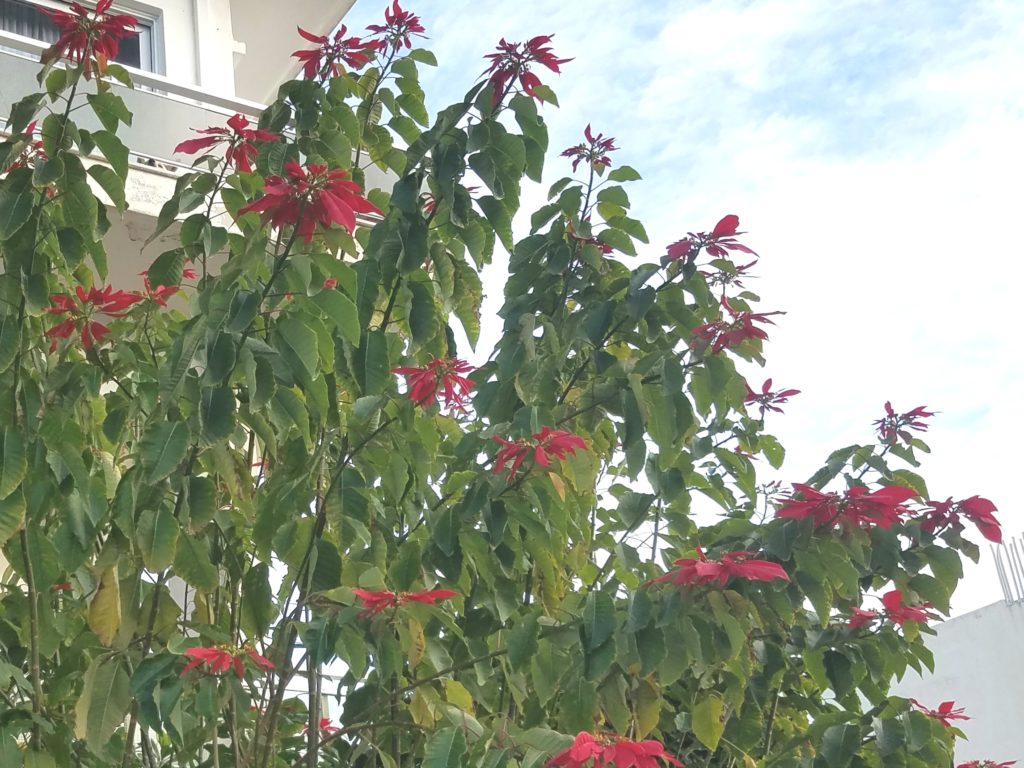
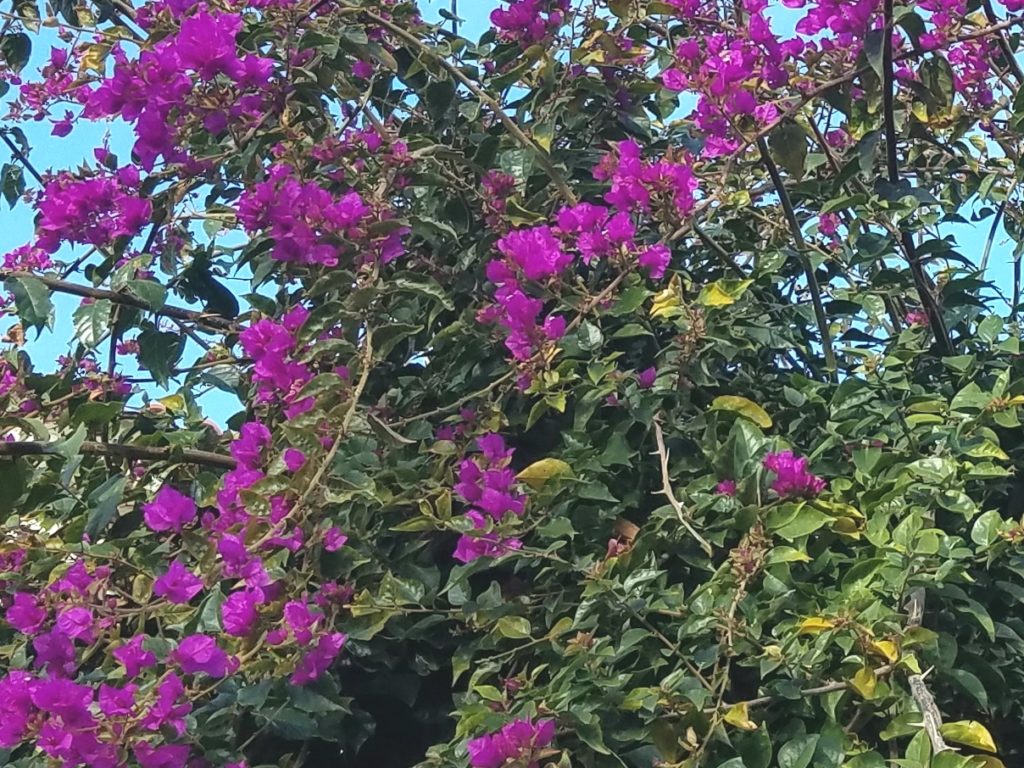
There are plenty of Neolithic artifacts in the museums to attest to the long inhabitation of the island. But most important is that Crete was the home of Europe’s first advanced civilization: the Minoans. .. during the period from about 5,000 to 4,000 years ago. One of our reasons for coming to Crete is to investigate the remnants of the Minoans, and I will probably post a separate blog about our findings.
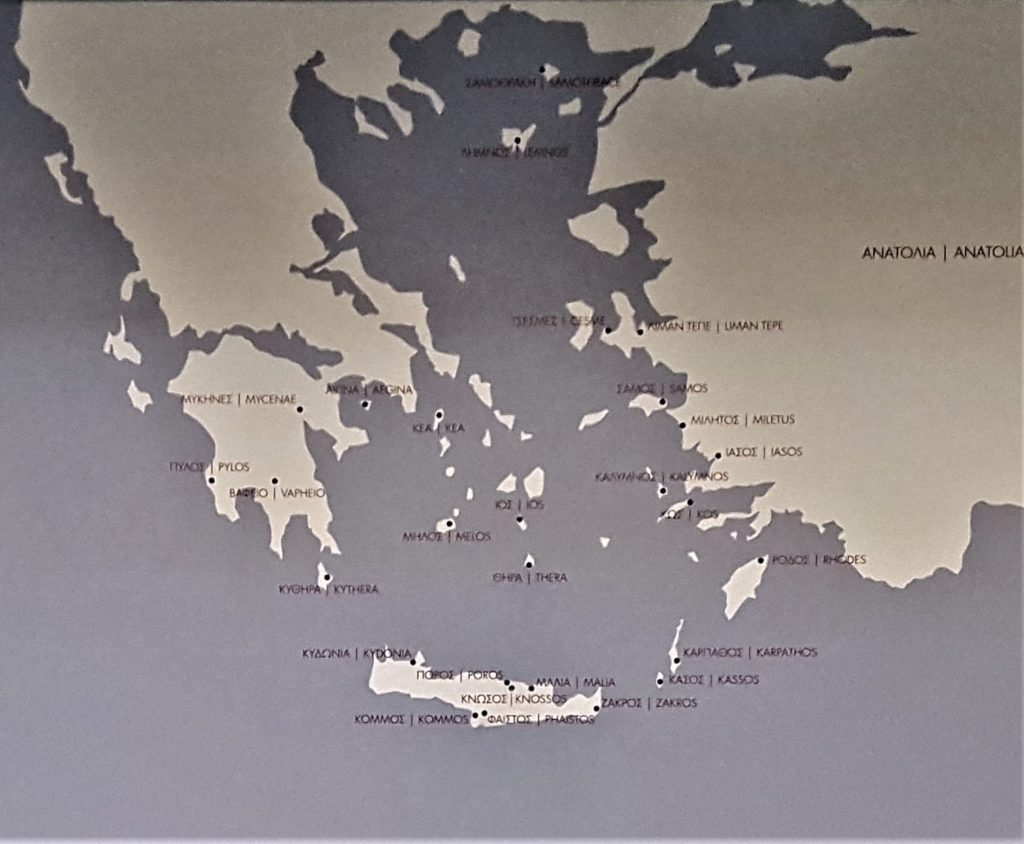
After the Minoans, Crete was ruled by many civilizations: the Mycenaean Greeks, the Romans, the Byzantines, various Arabs, the Venetian Republic and the Ottomans. And so the Island and the cities contain constructions and ruins from all of these civilizations, usually stacked one on top of the other.
Crete has been part of Greece for over a hundred years and therefore is now part of the EU.
CHANIA
Believed by some to be one of the prettiest cities in Greece, Chania circles around the old Venetian harbor with the 8,000 + foot White Mountains behind. The old town right around the harbor is a nice pedestrian only area.
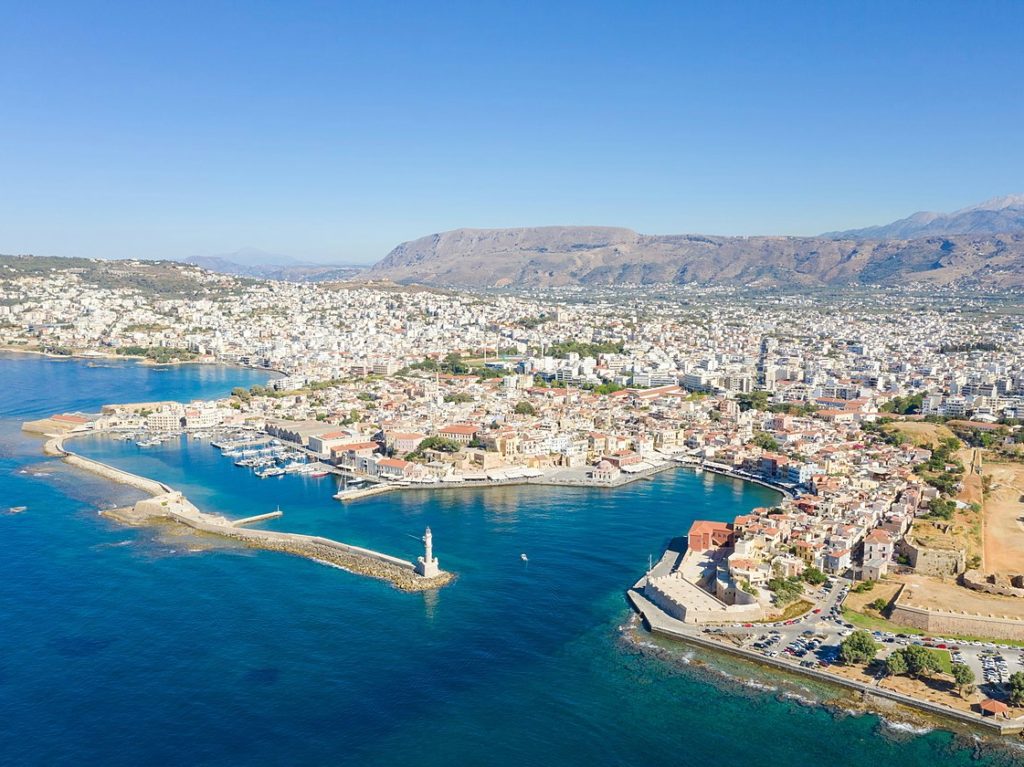
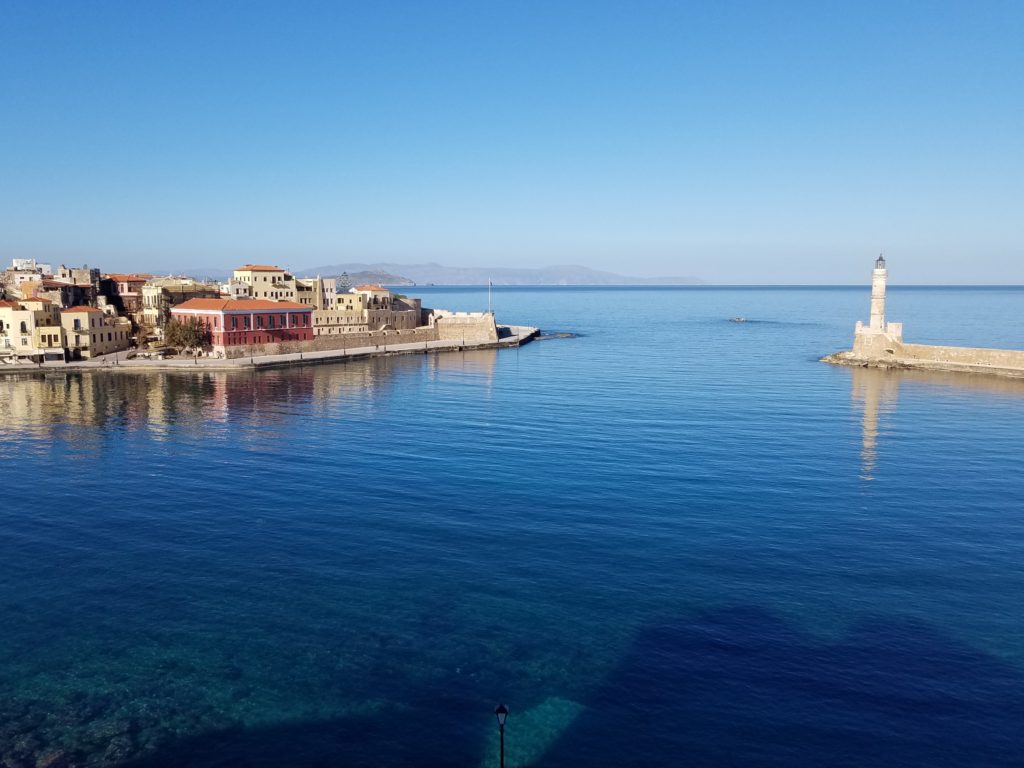
There are 5,000 year old Minoan ruins within the town. And a fine Museum of Minoan artifacts.
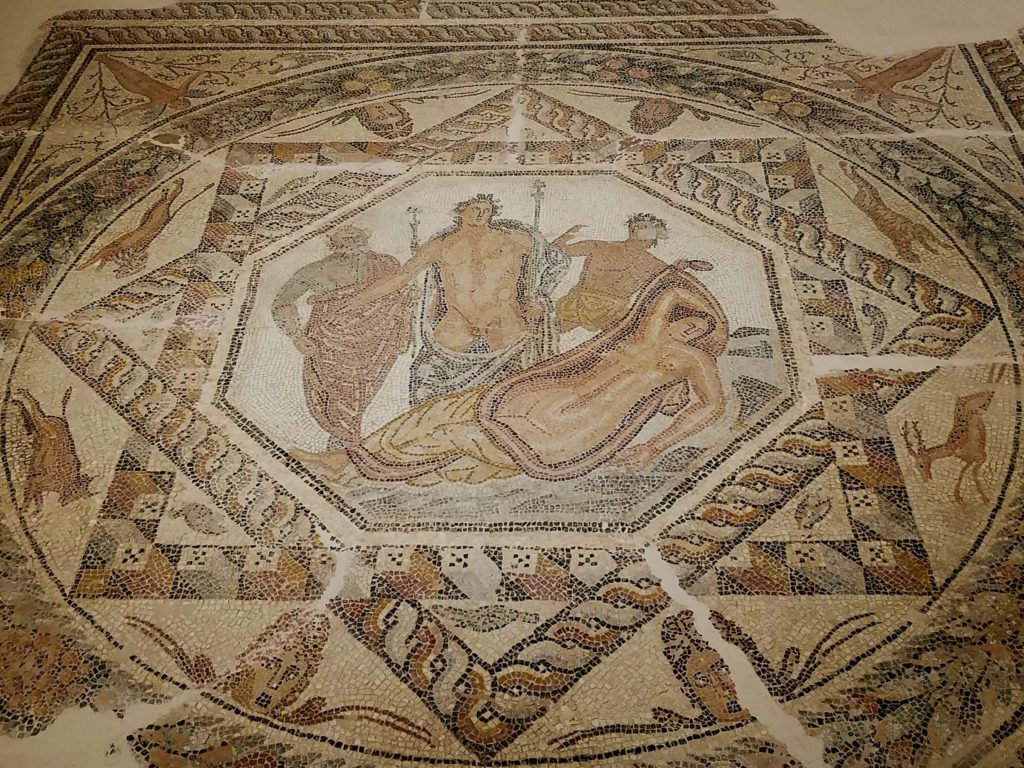
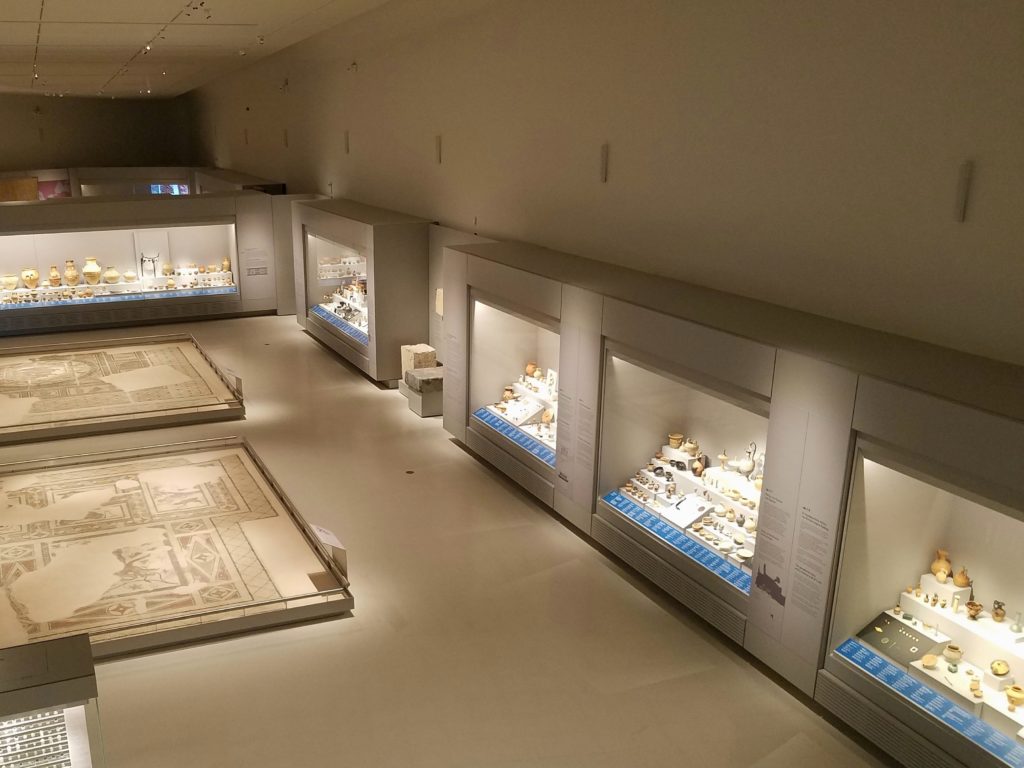
Much of the Venetian and Ottoman defensive walls and harbour constructions are intact, plus various Muslim and Christian churches.
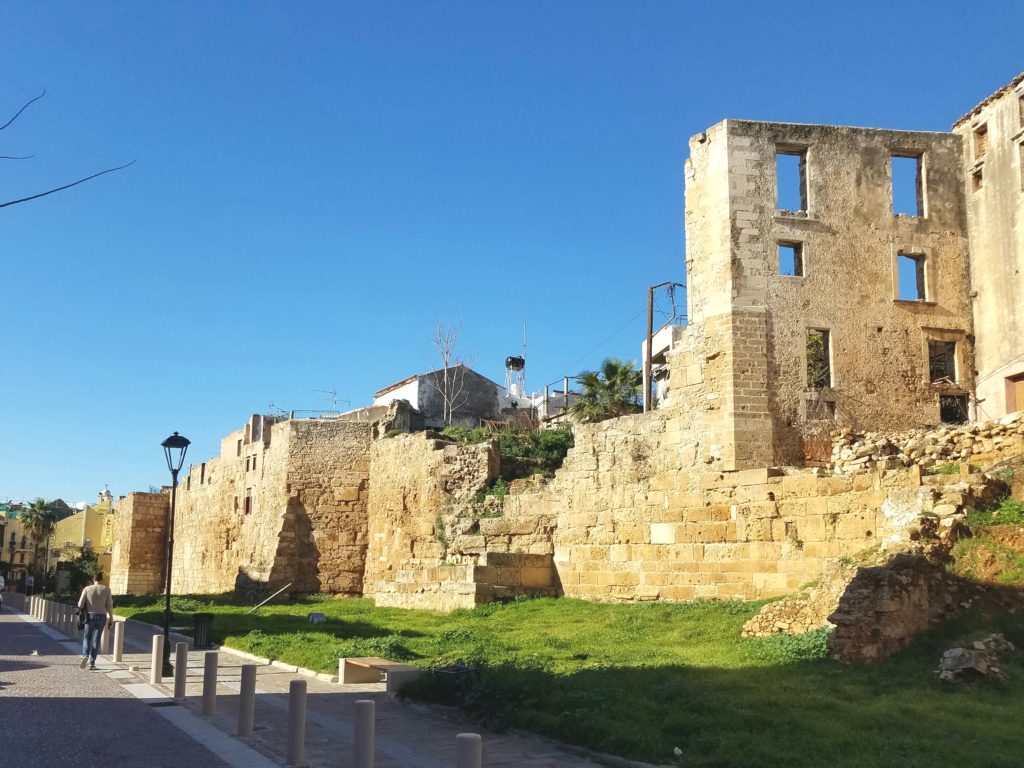
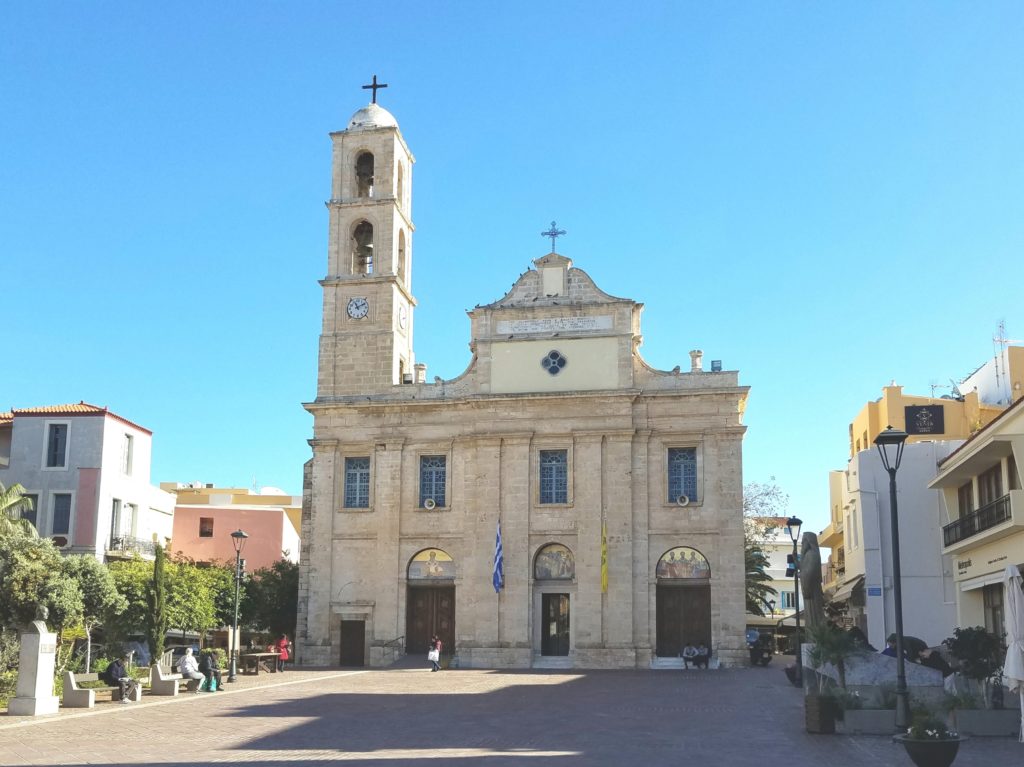
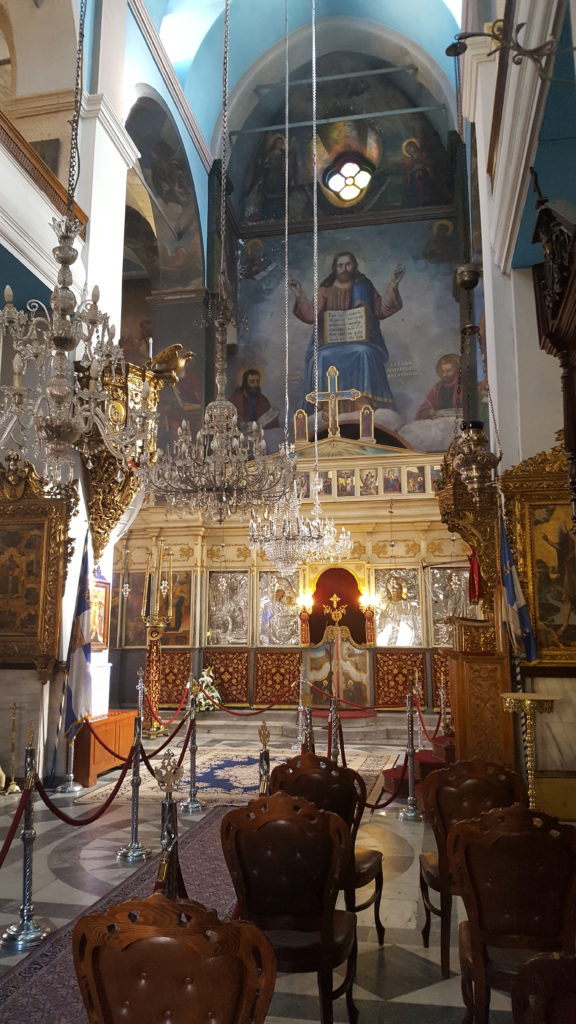
RETHYMNO
This is a surprisingly small town. Less than 40,000 people. And being here in the winter, almost everything is closed. Kind of eerie walking around the streets of empty storefronts. Still enough hotels and restaurants are open, but it is apparent that the town’s economy is dependent on seasonal tourism.
Rethymno has perhaps the best preserved Venetian / Ottoman Fortress on the Island, but it was not open during this time for us to visit the interior.
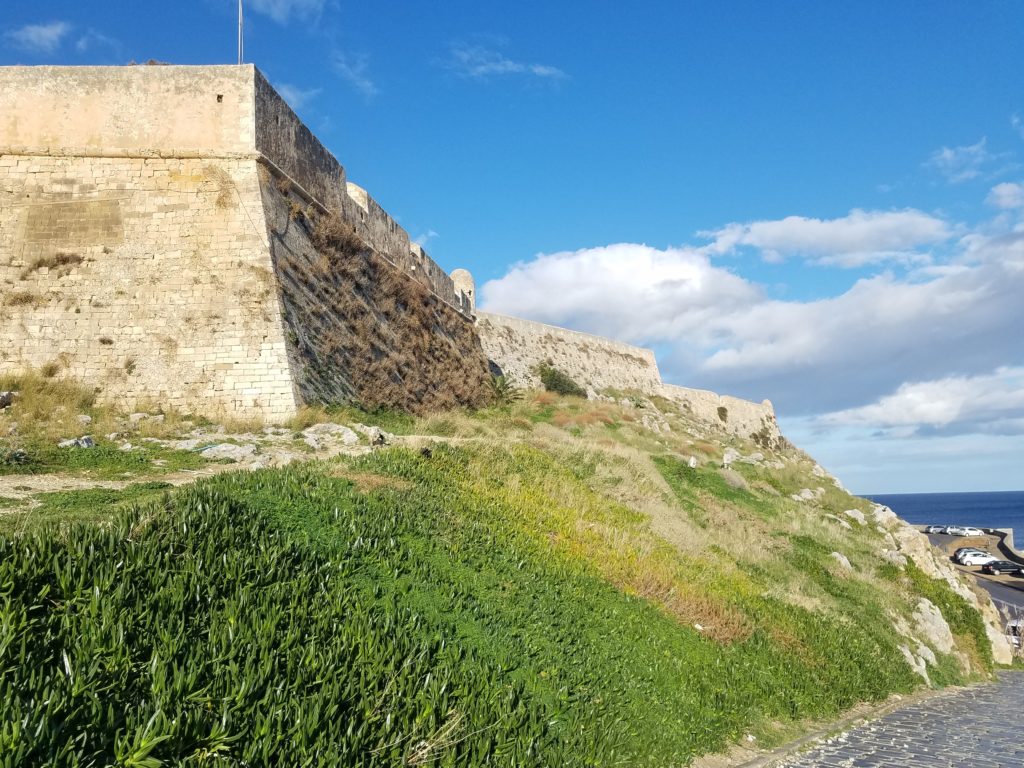
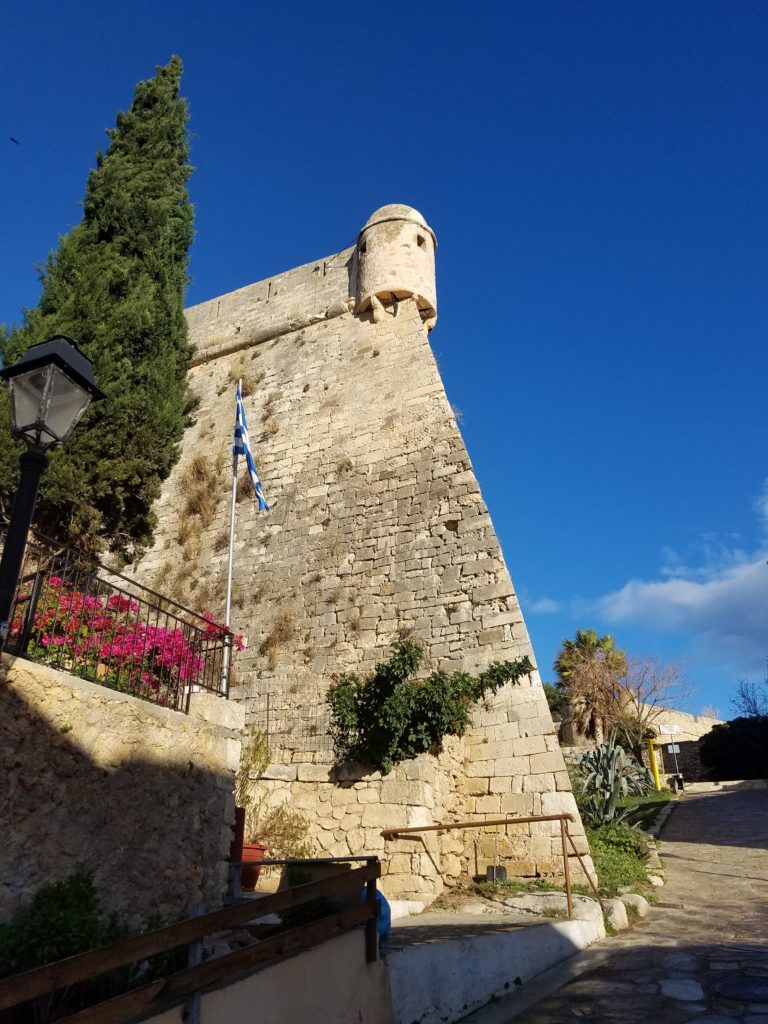
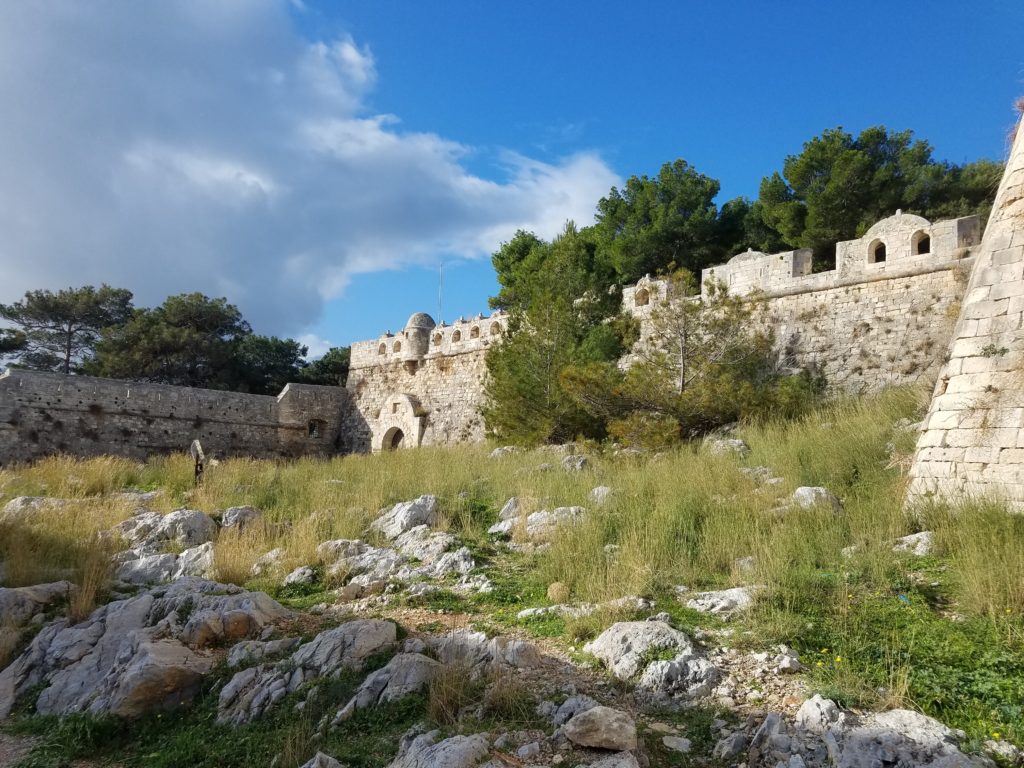
There is a small Venetian harbour and of course lines of tourist restaurants.

There is a very interesting “old town” with a university, and many narrow streets where real people are living .. in addition to the shops and restaurants.
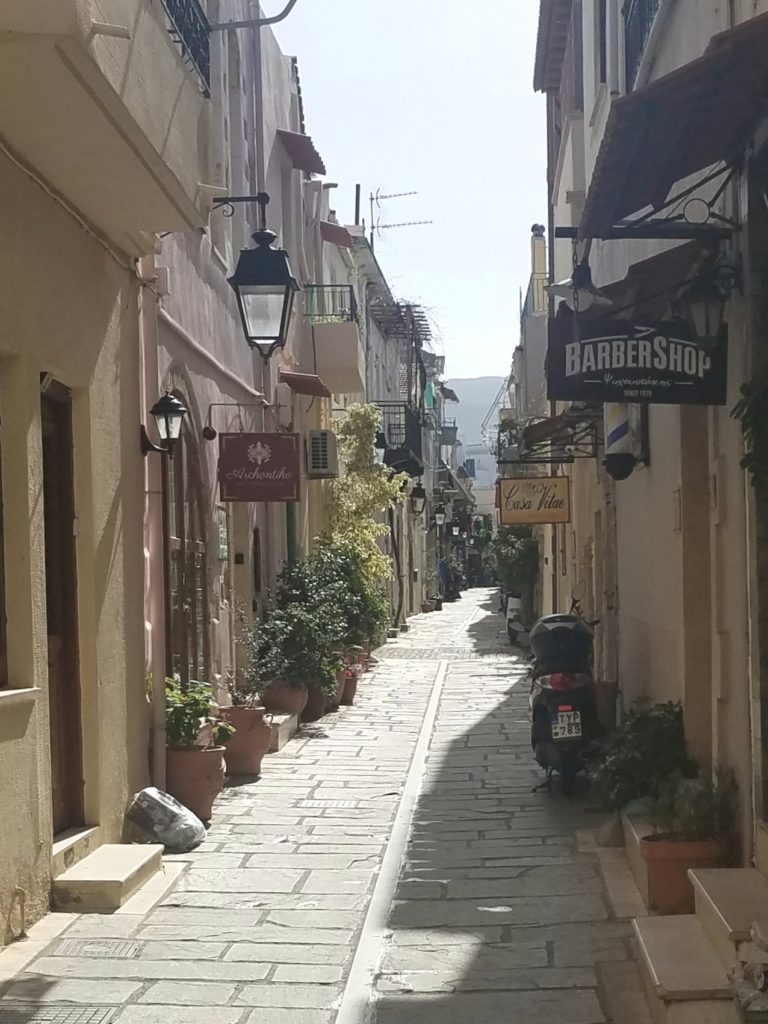
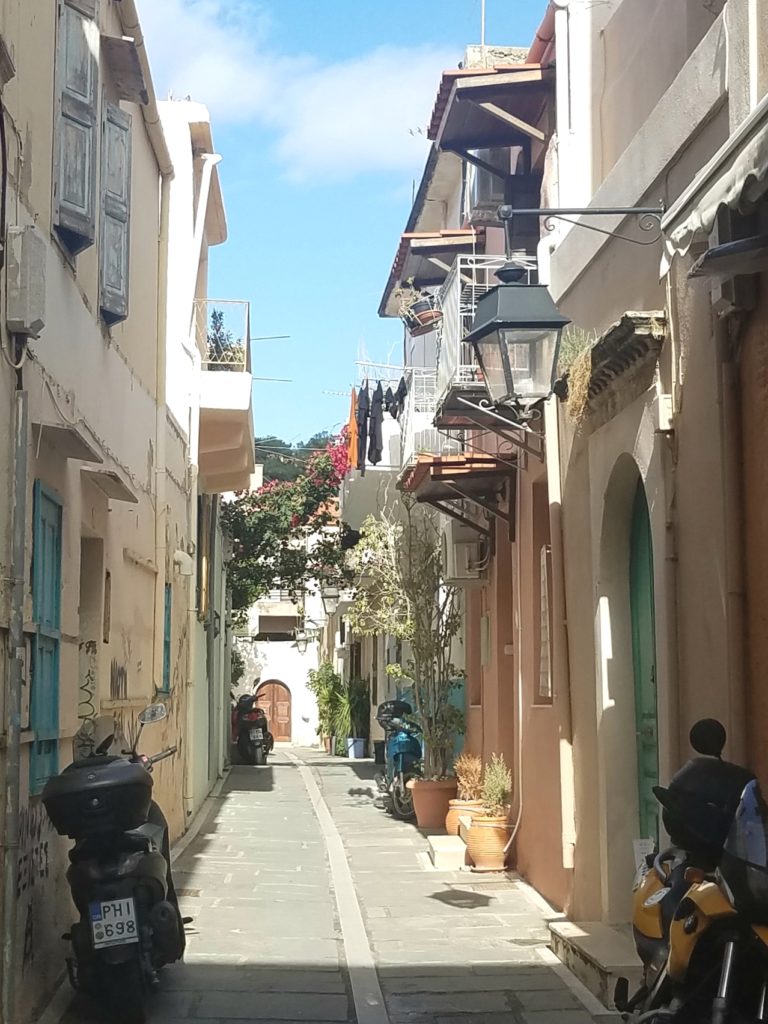
Plus, Mosques and churches of various denominations all around.
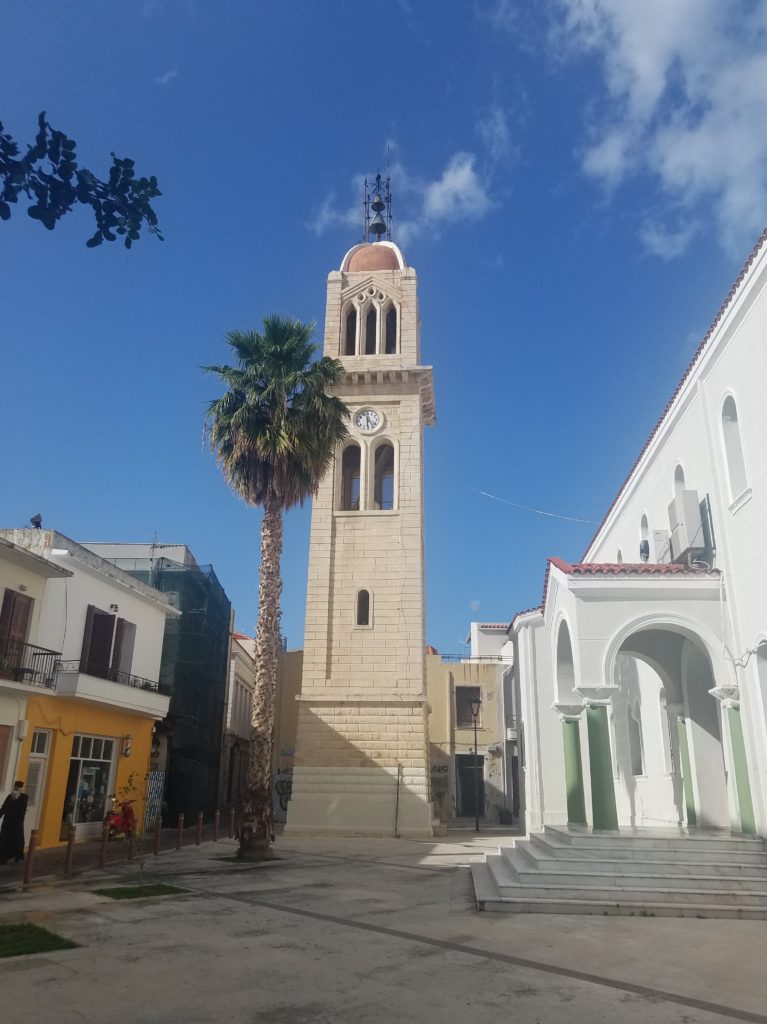
Up on the hill above Rethymno is a 3,500 year old late Minoan grave site with over 200 passage graves carved into a rocky hill. They were only discovered on the 60s. The grave artifacts unearthed were transferred to the historical museum in Heraklion.
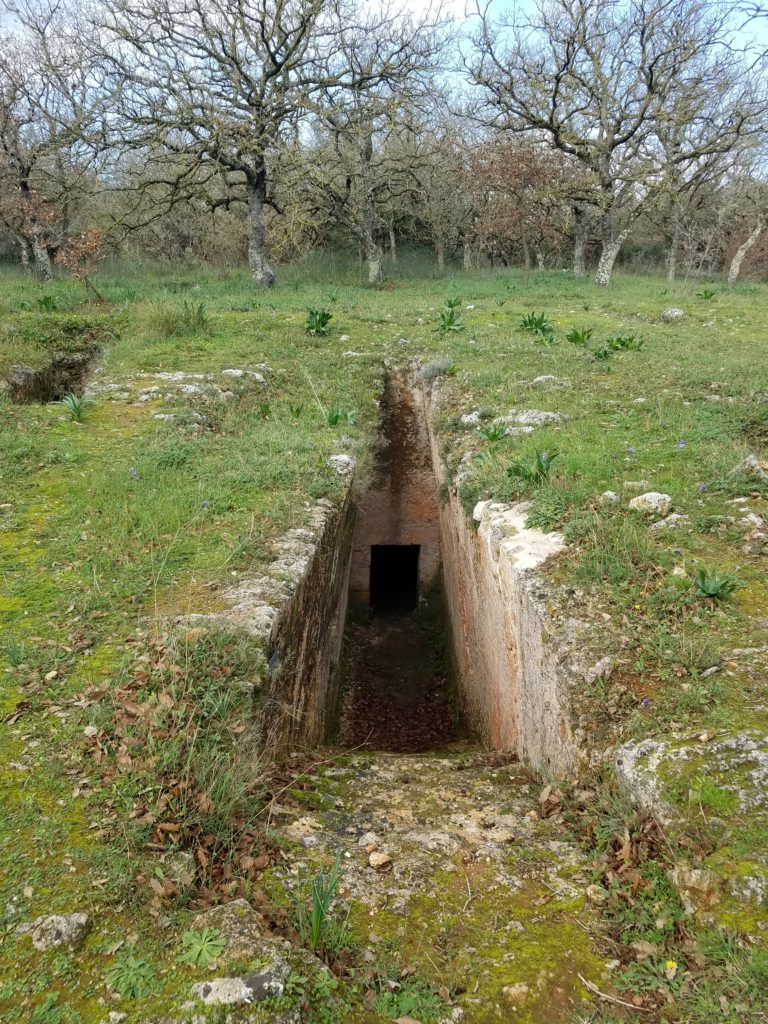
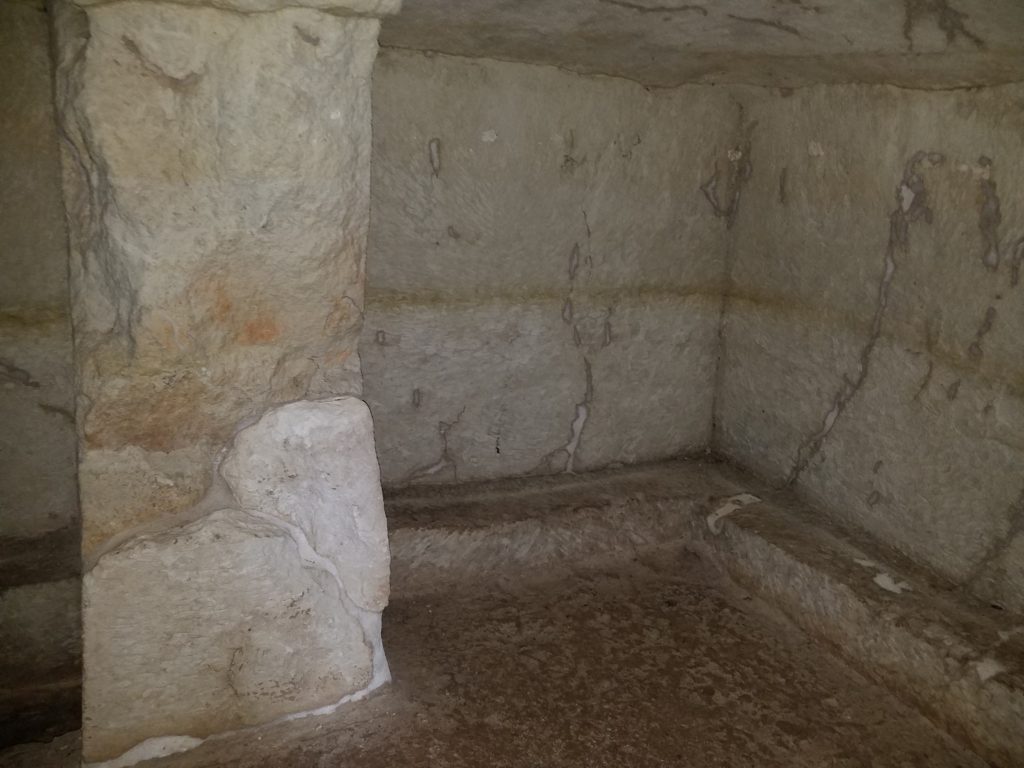
HERAKLION
After Chania and Rethymno, Heraklion is a big city. But only in comparison because it actually only has around 150 thousand people. But it seems to not depend so much on tourism, and it is bustling.
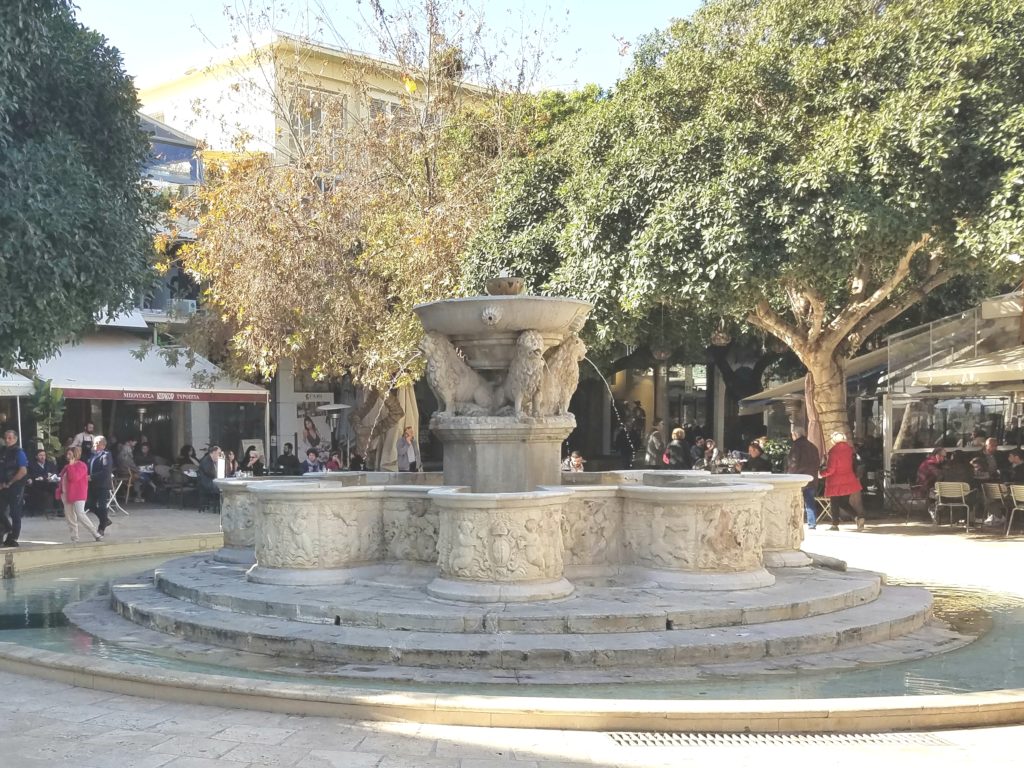
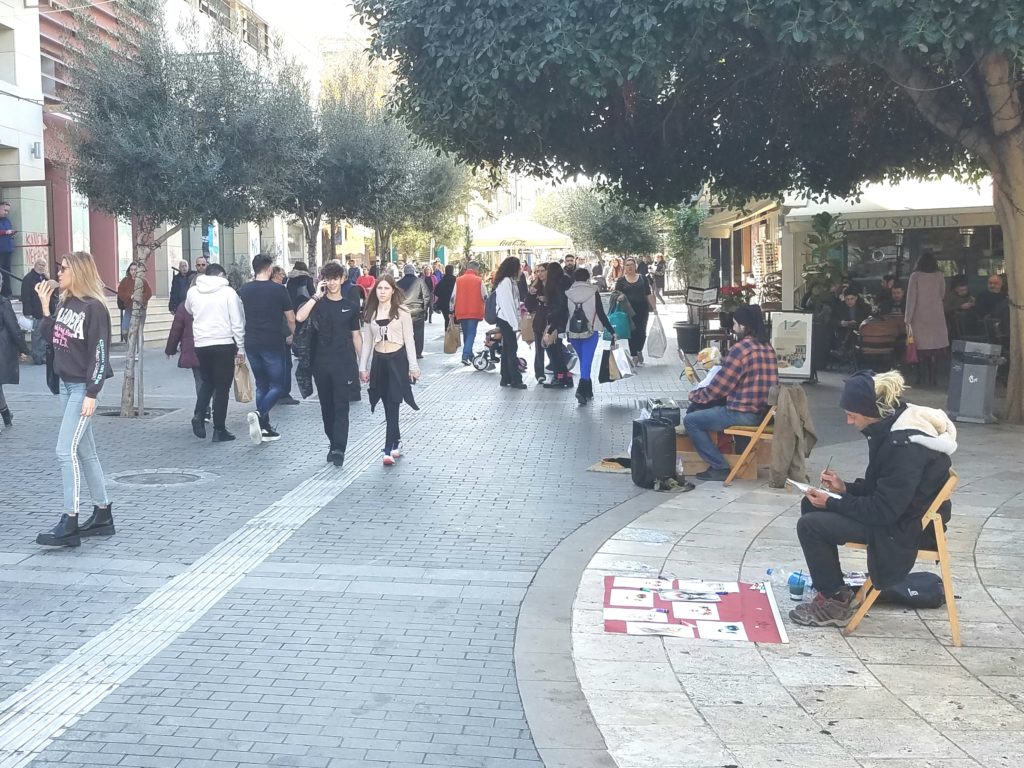
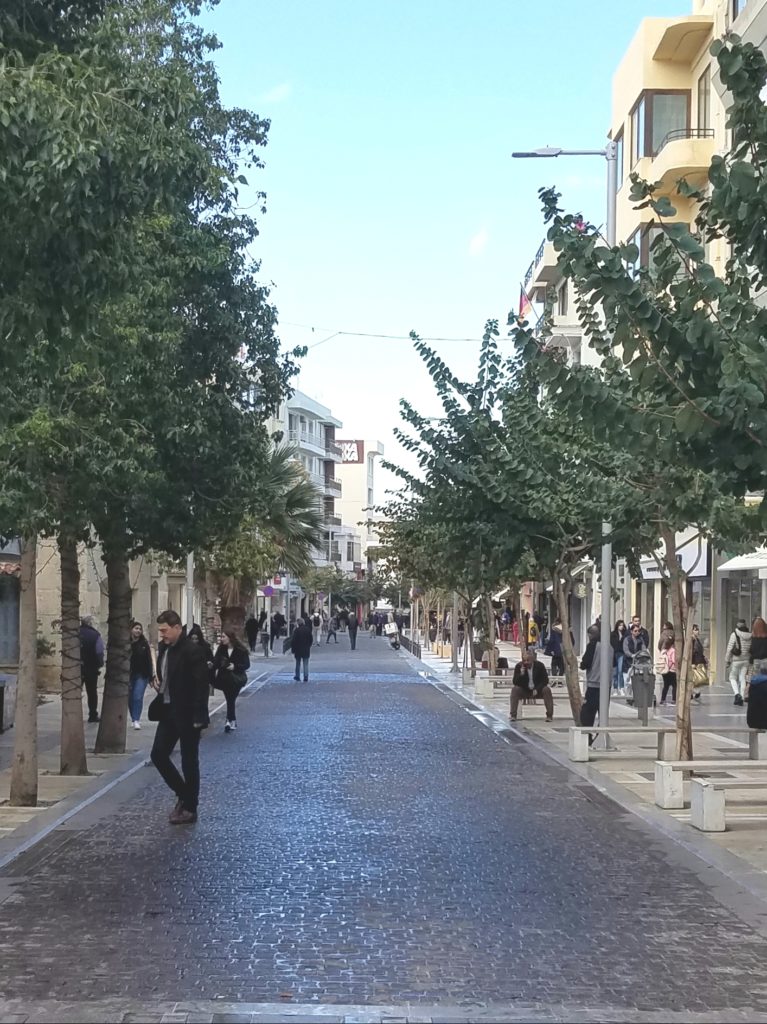
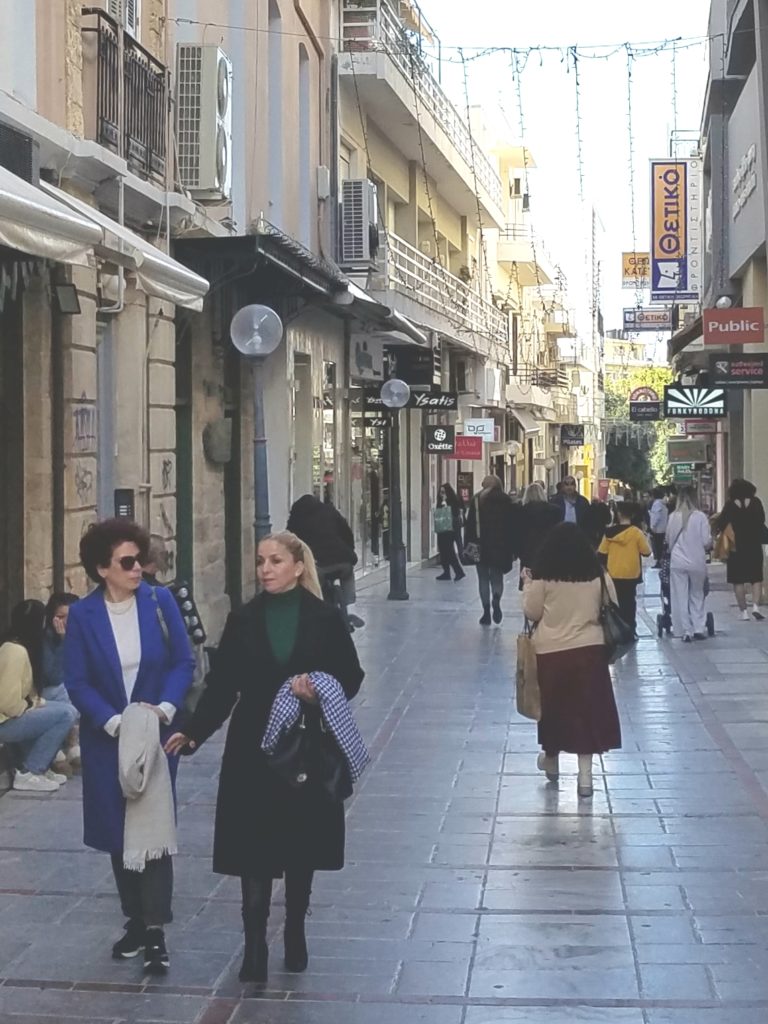
Most people we talk to in Crete describe Heraklion, their Capital, as an ugly city. Certainly it is around the old harbor, where a highway has obliterated the entire waterfront. But there are some nice pedestrian only areas in the downtown and the road out to Knossos is very nice.
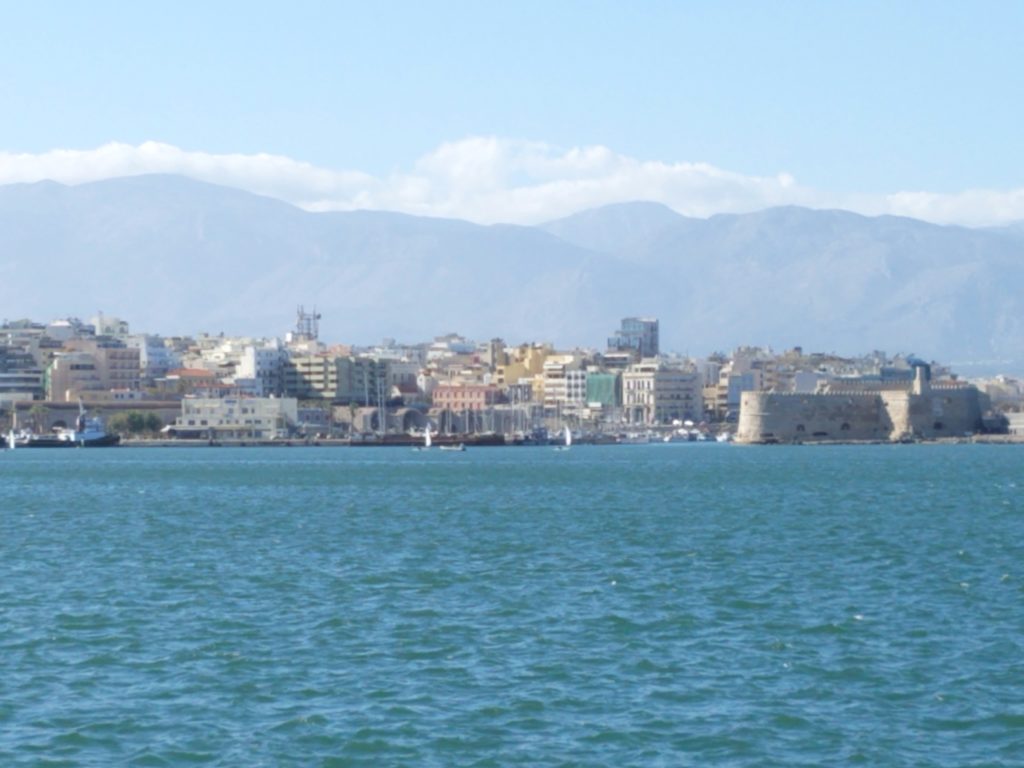
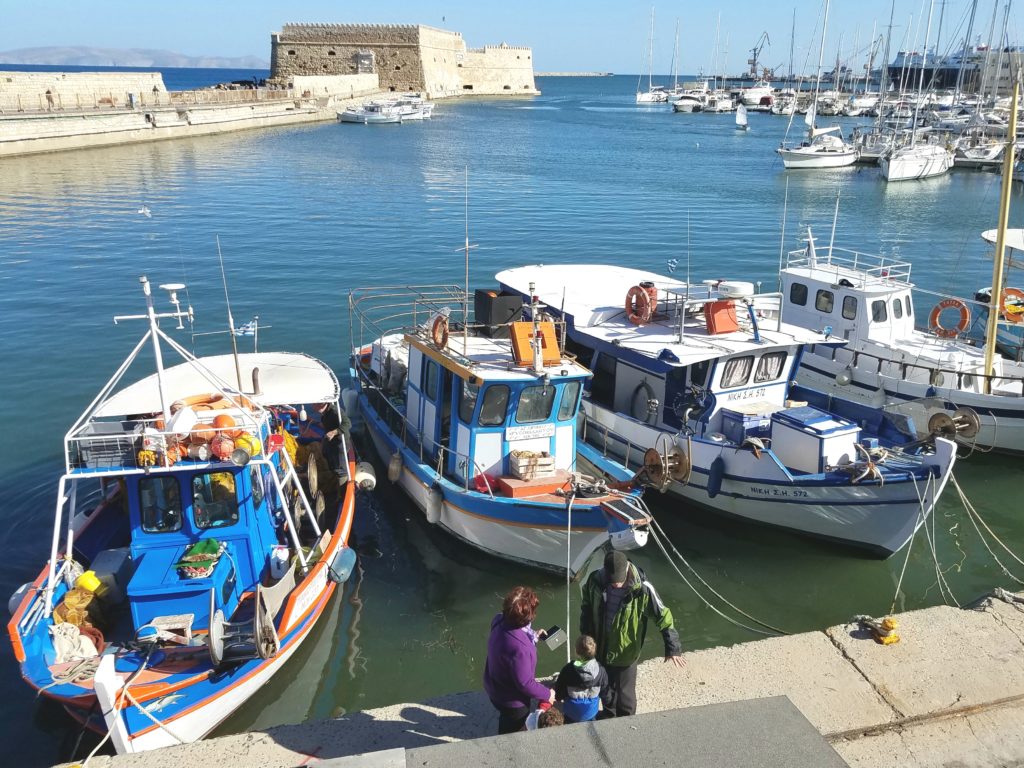
Like all these cities the past is all jumbled up and piled on to one another.
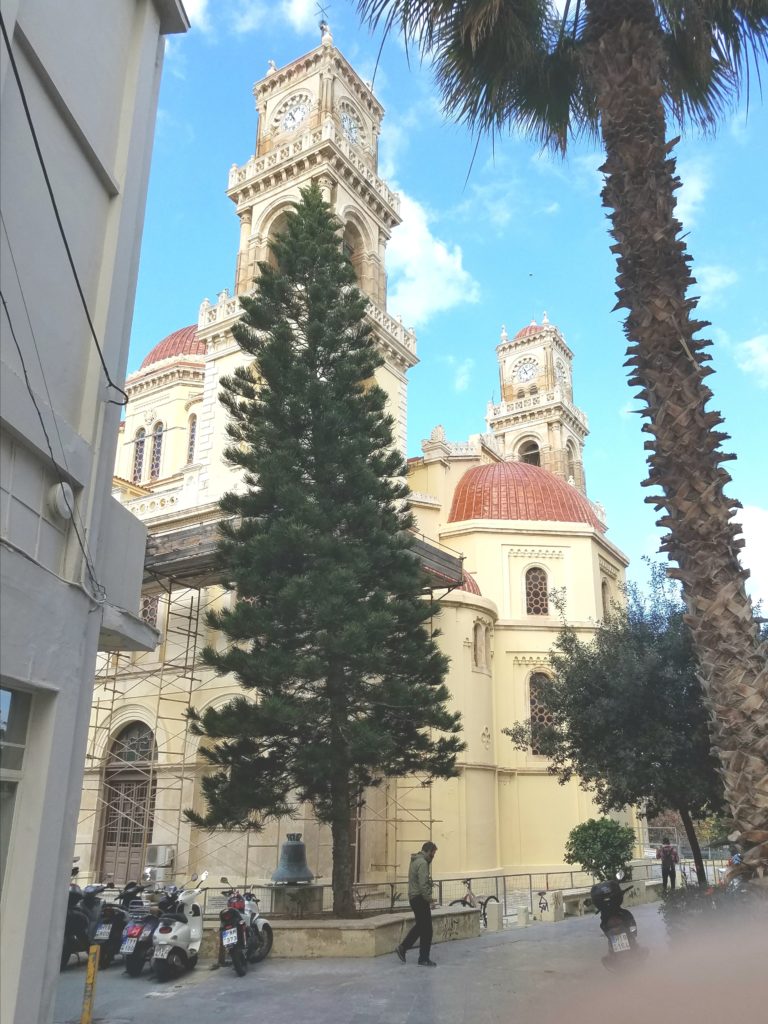
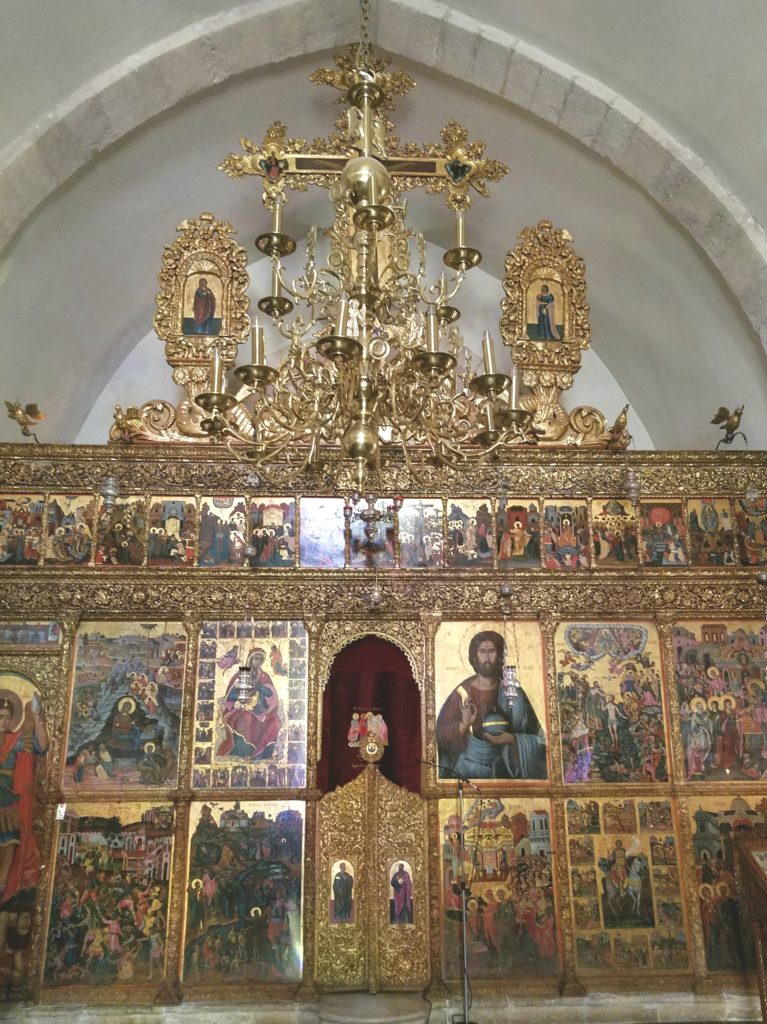
The comparatively new (only 500 years old) Venetian city walls are still intact, not in very good repair, but being worked on.
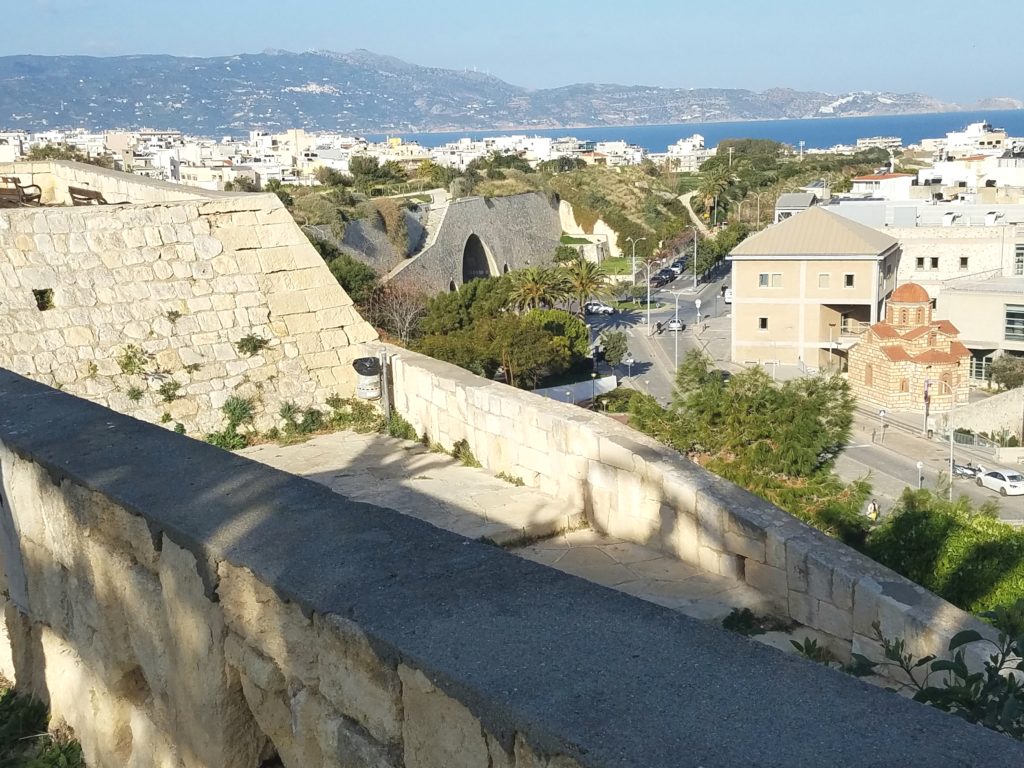
Of course we visited the Minoan palace of Knossos. Our guide book said be there as the site opened to avoid the crush of the crowds. Here in the winter, we saw two other people in the entire site.
The ruins are roughly 4,000 years old and a treasure of European and world history. They are remarkable for their age with multi story buildings, running water and flush toilets. The palace sat in a lovely green valley, and the ruins still do.
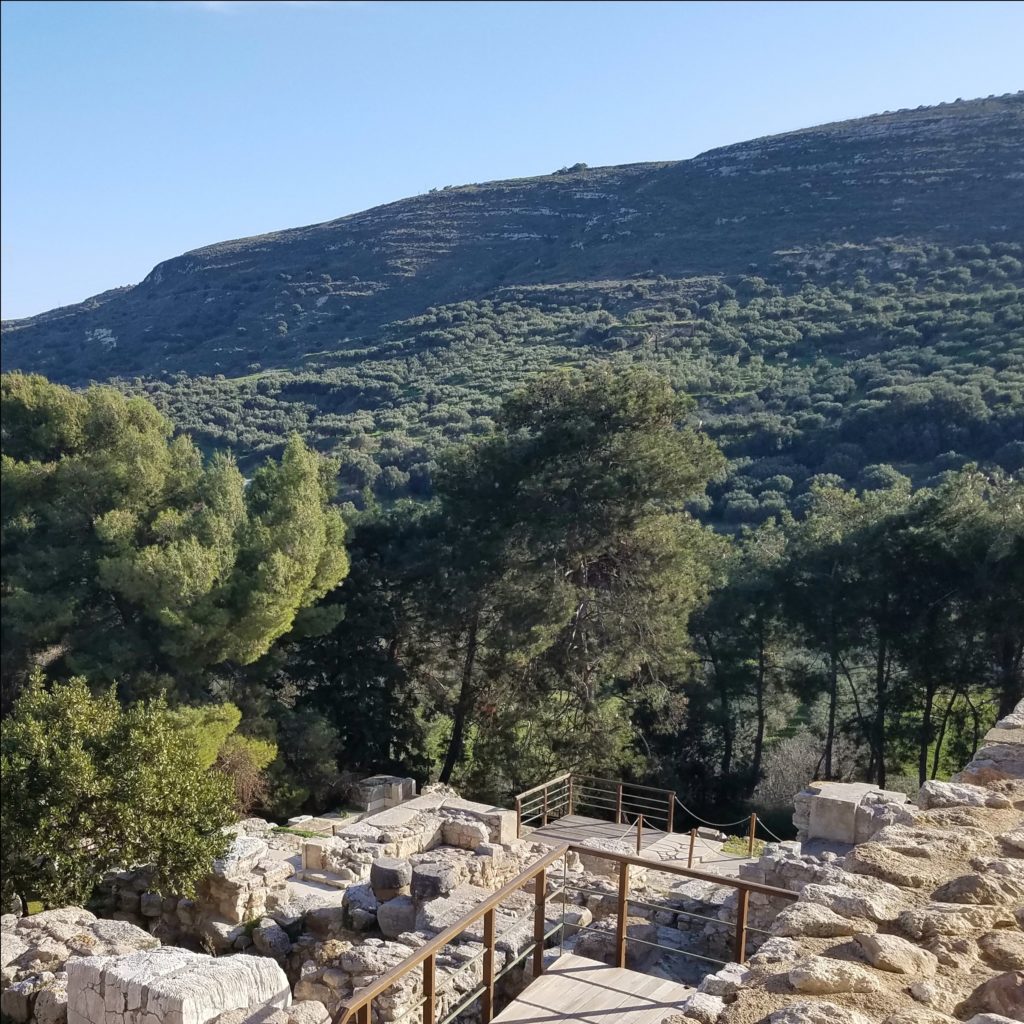
A model of the palace. Over one thousand rooms.
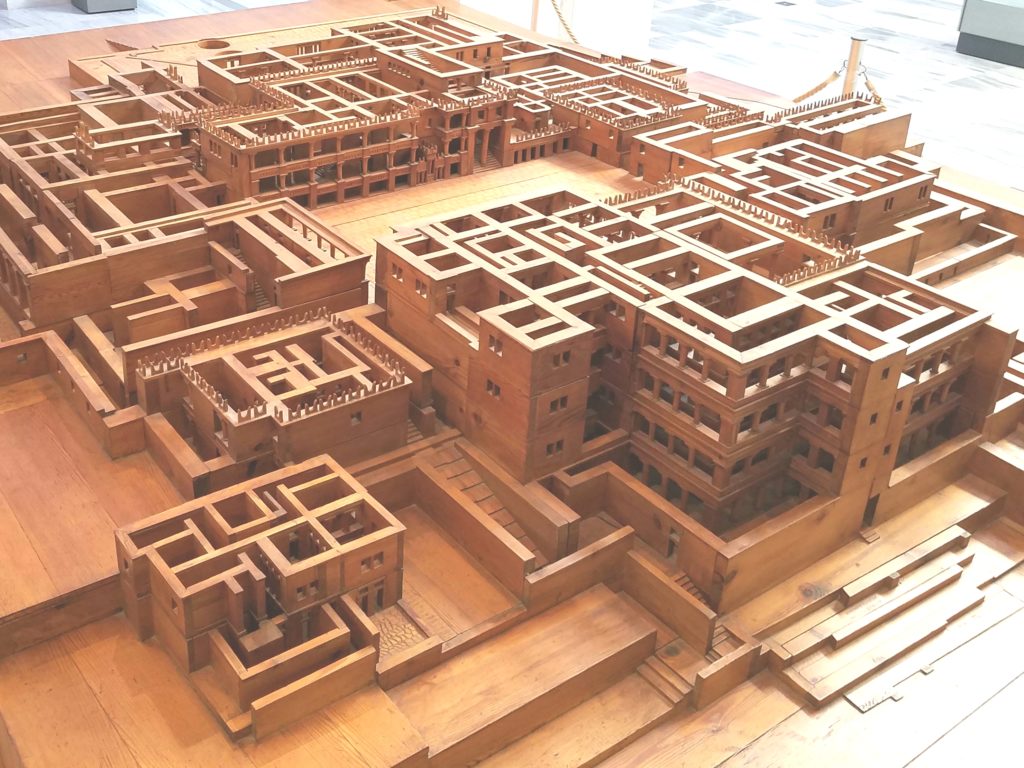
Just a few photos around the palace.
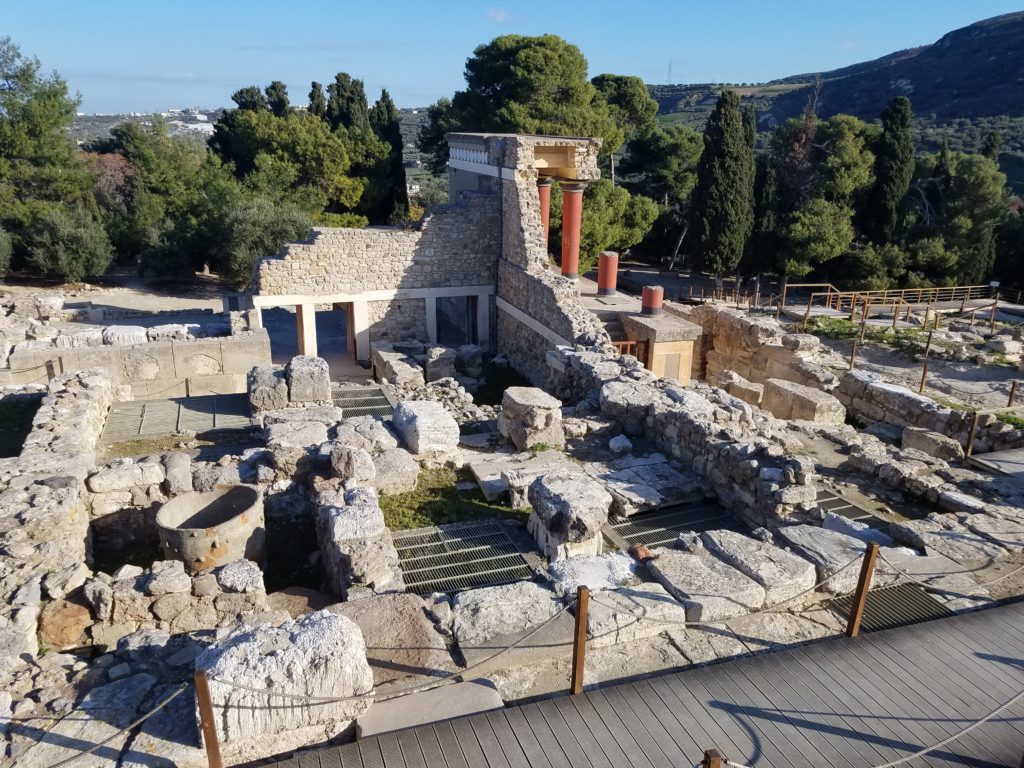
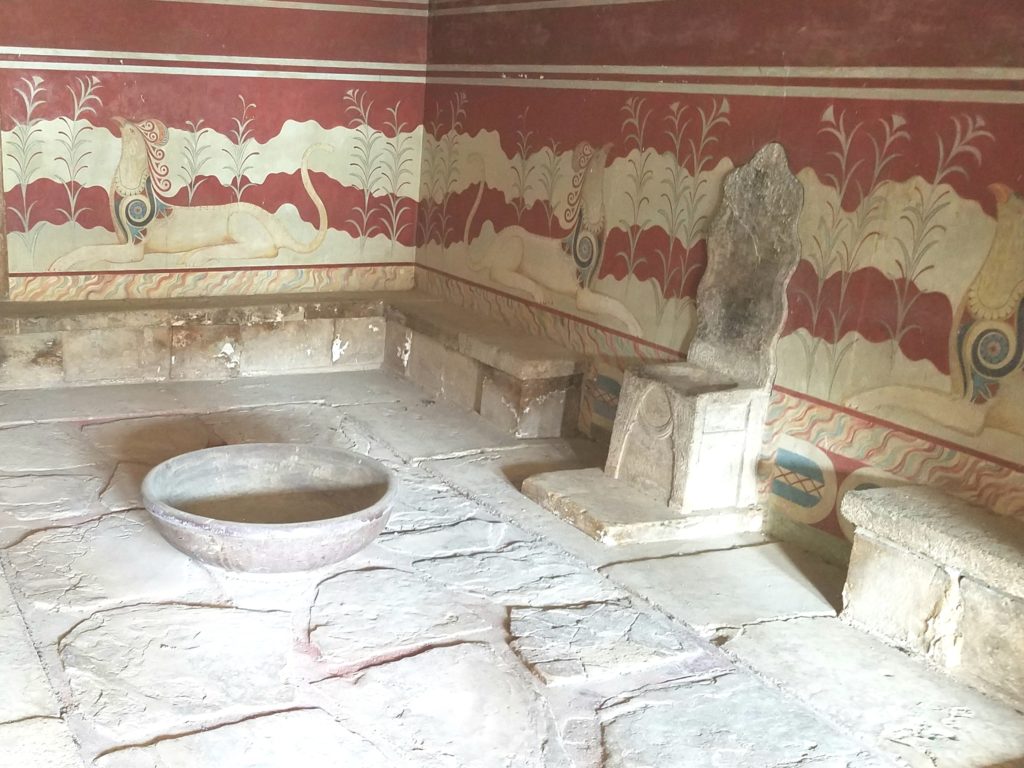
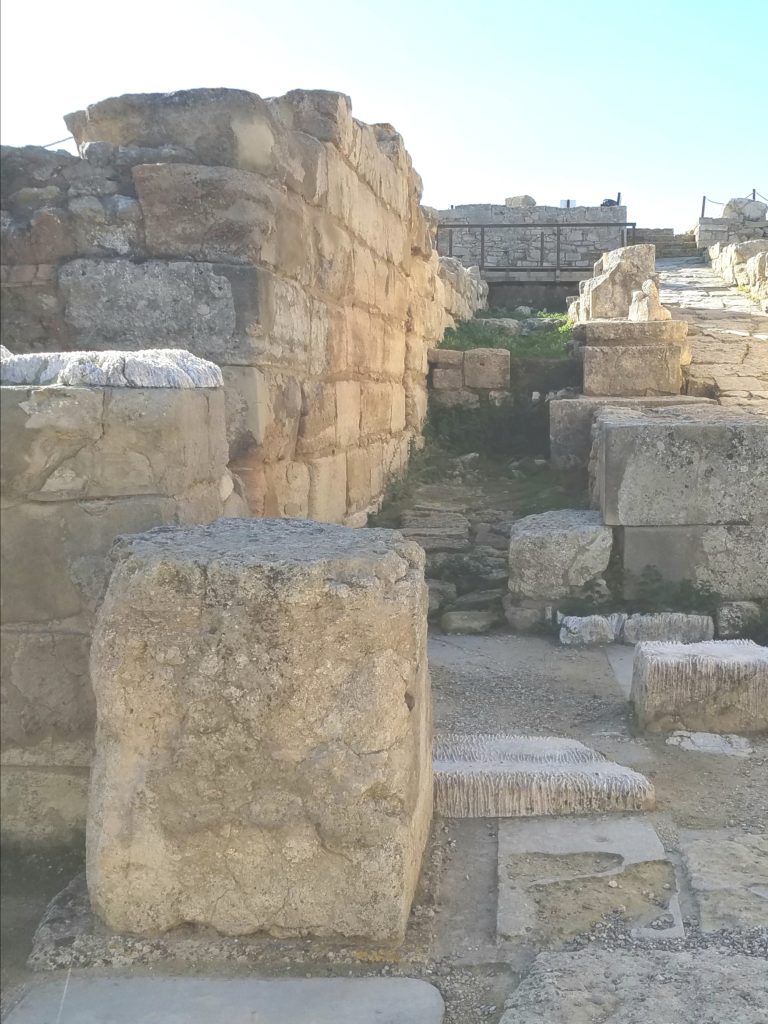
And just a few from the wonderful Museum in Heraklion that houses the fantastical and everyday artifacts of the Minoans.
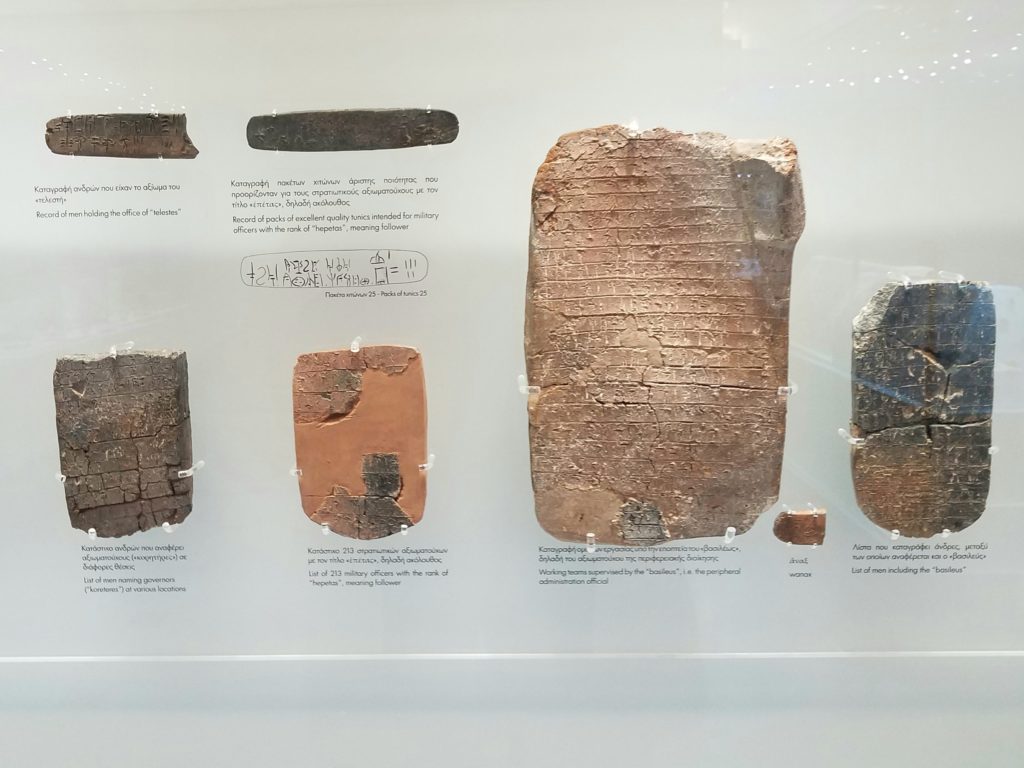
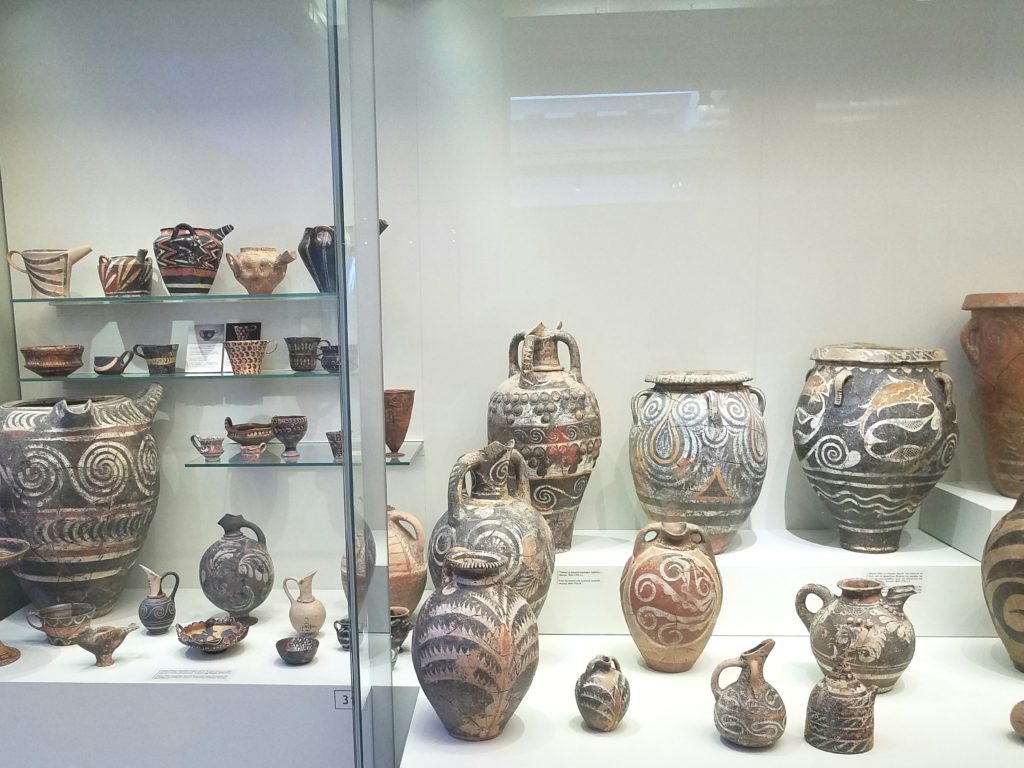

One thing that needs to be said is that all over Crete, we were greeted with friendly people, interested in us beyond our credit cards and happy to be helpful.
There are many fine modern restaurants in Heraklion, but what an experience at the Anchorage where Captain John retired and with his wife has run their restaurant on the first floor of their house for 21 years. Five different dishes a day and if you come in the evening, you are offered the ones that are still left to serve. Great food and after all of the complimentary wine and Raki made by Captain John’s family that you must taste .. you have had quite an evening. Tip: the Raki really does not make you feel 10 years younger the next morning as Captain John promised, not for me anyway.
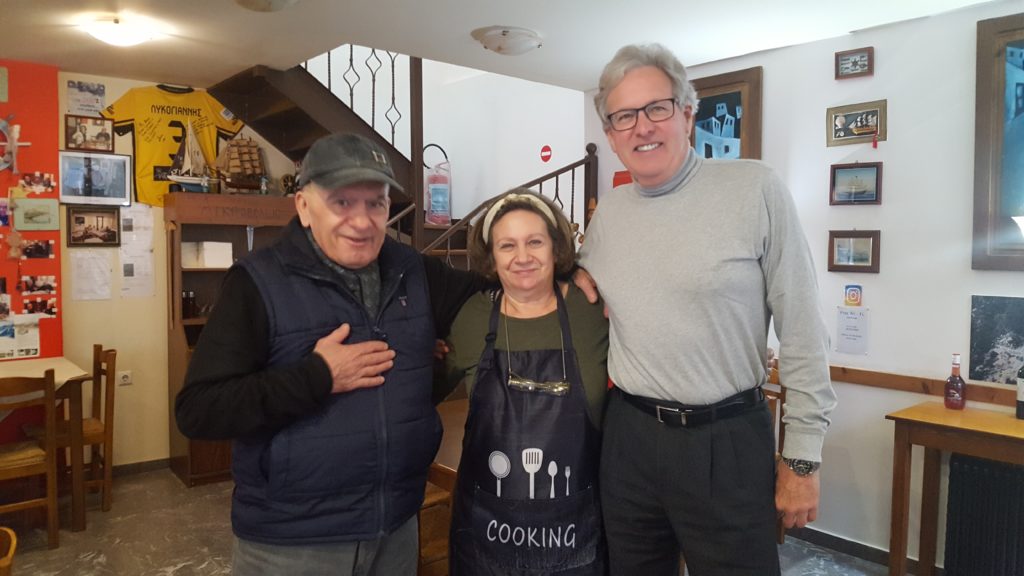
That’s it for our first visit to Crete. I would recommend that if you visit that you come in the shoulder season. Too many things are closed in the winter including almost everything in the south of the Island.
But still we had a fine visit and believe it to be an interesting destination. Besides, we had to visit the Minoans, which I will report on separately.
Now we are off for a “honeymoon” on Santorini before CAMarchand wings back to the USA.
Thanks for coming along.
Lovely photos and great running comentary Lew.
How did you navigate from one city to another?
Taxi? Bus?
Izzy
Nice job
How did you find captain John?
The magic of Google.
I use maps and search restaurants and read about them.
I use Bookings dot com and set up door to door car and driver. Sounds expensive but compared to all the waggling otherwise it is a great option.